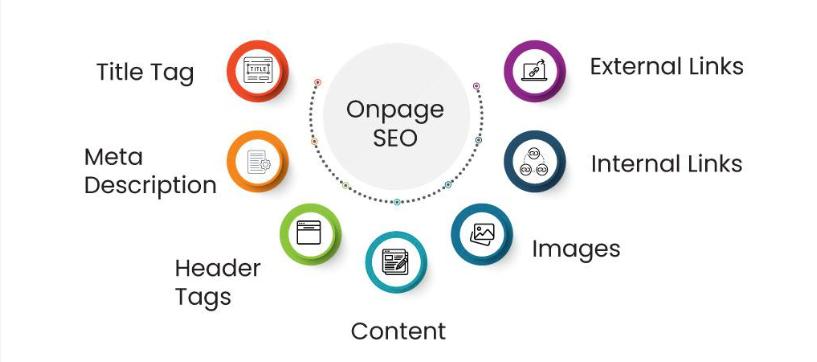Marketing keywords are the lifeblood of your business’s relevance in the digital space.
Small businesses can dominate the digital landscape by strategically incorporating marketing keywords. These keywords are vital for search engine optimization, pay-per-click campaigns, and other content marketing strategies.
If you’re still uncertain about ‘marketing keywords,’ here’s the essence: Keywords are the cornerstone of any digital marketing campaign. They are the terms potential customers use to search the web and the phrases for which your competitors rank high, driving traffic to their sites. Want that traffic on your website?
You need to elevate your marketing keyword strategy for similar search engine visibility.
In this blog post, we’ll show you everything you need to know about marketing keywords, including examples and best strategies. Let’s get started!
Table of Contents
The Basics of Marketing Keywords
Marketing keywords are the cornerstone of any successful digital strategy, serving as the connective tissue between businesses and their target audience. These phrases are carefully selected based on the audience’s online search behavior.
Strategically incorporating these keywords leads to higher visibility and engagement. This is why small business marketers must understand SEO keywords and their functionality.
But before we proceed, let’s clarify what a keyword is. Keywords are the terms people use to search for information on the web.
These keywords are entered into search bars on platforms like Google, Yahoo, YouTube, social media, etc. The search results generated are directly related to the keywords used.
Keyphrases are a more detailed form of marketing keywords. These phrases target the specific intention behind the search. For example, “Shoes” is a keyword, but “Best running shoes for women” is a keyphrase.
Keyphrases help you obtain more specific information.
The Different Types of Marketing Keywords
- Short-tail keywords: Short-tail keywords are the primary form of a keyword, consisting of one or two words. While they generate high search volumes, they often lack specificity. Examples include “shoes” or “digital marketing.”
- Long-tail keywords: Long-tail keywords are more specific phrases with three or more words. Although they have lower search volumes, they attract more qualified traffic due to their specificity. Examples include “best running shoes for women with high arches.”
- Branded keywords: These keywords include the name of a specific brand or company. Examples include “Nike shoes” or “Coca-Cola.”
- Non-branded keywords: These are generic terms not associated with any particular brand. Examples include “running shoes” or “carbonated beverages.”
Understanding user intent
If there’s something more important than keyword research, it’s understanding user search intent. Intent can be classified into three main categories:
- Informational intent: Users search for information or answers to their questions. Examples include “How to tie a tie.”
- Navigational intent: These queries aim to find a specific website or resource. Examples include “Facebook login” or “Convert PDF to JPG.”
- Transactional intent: Users intend to purchase or take a specific action. Examples include “buy Nike running shoes” or “subscribe to a marketing newsletter.”
You can ensure your content effectively addresses your target audience’s needs by aligning your keyword selection with user intent.
Read also: How to Master eCommerce Keyword Research in 2025
How to Research and Select Keywords
Keyword research forms the groundwork for a successful digital marketing campaign.
Here’s a straightforward way to conduct your research efficiently. Let’s explore how to research and select keywords for your digital marketing efforts.
Use keyword research tools

Before diving into how to spot and analyze keywords, check out these keyword tools. They provide valuable insights like related terms, search volume, and competition.
- Google Keyword Planner: Enter relevant keywords or phrases related to your business. The tool offers insights into search volume, competition, and suggested bid prices for PPC campaigns.
- Semrush and Ahrefs: These comprehensive SEO tools provide robust keyword analysis capabilities, including competitor analysis and keyword difficulty scores. Use them to analyze competitor keywords and identify gaps in their strategies to uncover untapped opportunities.
- KeywordTool.io and AnswerThePublic: Explore long-tail keyword variations and common questions related to your niche. Long-tail keywords often have lower competition and higher conversion rates, making them valuable for targeting specific audience segments.
Identify high-value keywords for your small business niche
High-value keywords have high search volume and low to moderate competition. Once you learn to identify these keywords, your job becomes much easier. Here’s how to do it:
- Relevance: Choose keywords closely aligned with your products or services to attract qualified leads.
- Search volume: Prioritize keywords with sufficient search volume to ensure visibility and reach.
- Competition: Assess the level of competition for each keyword. Balance high-volume, less competitive keywords with lower-volume, niche-specific terms to maximize visibility and ROI.
Analyze your competition
To outpace your competitors, you need to understand the keywords they are ranking for. Conversely, identify your competitors through the keywords related to your business niche.
Tools like Semrush and Ahrefs provide insights into competitors’ keyword strategies, including the number of websites targeting specific keywords and their domain authority.
Analyze competitor content quality and backlink profiles to find opportunities to differentiate your approach.
Understand keyword difficulty
Next, let’s understand keyword difficulty. Keyword difficulty estimates how challenging it is to rank for a particular keyword. You can quickly assess difficulty scores using Moz’s Keyword Explorer or Semrush’s Keyword Difficulty tool.
Aim for keywords with moderate difficulty levels, balancing search volume with competition.
By understanding keyword difficulty, you can prioritize efforts on achievable targets and optimize your keyword strategy for maximum impact.
Opt for a balanced keyword strategy
Marketers aiming for a well-rounded keyword strategy must incorporate various keyword types to address different facets of user intent and search behavior:
- Short-tail keywords: Target broad, high-volume keywords to capture a wider audience and increase brand visibility. While these keywords may have higher competition, they can attract significant traffic.
- Long-tail keywords: Focus on specific queries or phrases that address niche topics or pain points. Long-tail keywords often have lower competition and higher conversion rates, making them valuable for driving targeted traffic.
- Semantic keywords: Include synonyms, related terms, and variations of your primary keywords to enhance relevance and improve organic visibility. Semantic keywords help diversify your portfolio and capture broader search queries.
- Intent-based keywords: Align keywords with the searcher’s intent, whether informational, navigational, or transactional. Intent-based keywords ensure your content addresses users’ needs effectively, enhancing relevance and engagement.
You can create a comprehensive strategy that maximizes visibility, relevance, and engagement across various search contexts by combining short-tail, long-tail, semantic, and intent-based keywords.
Examples of marketing keywords
For example, an all-encompassing keyword strategy for a content piece on the primary keyword “coffee makers” can include:
- Short-tail keywords: Coffee Makers, Coffee Machine, Best Coffee Makers, Coffee Brewer.
- Long-tail keywords: Coffee Machine for Office, Coffee Machine for Home, Types of Coffee Makers, Coffee Maker Travel Mug, Drip Coffee Makers.
- Semantic keywords: Coffee Pot, Brewers, Coffee Beans, Hot Coffee.
- Intent keywords: Espresso Machine, Stainless Steel, Brewing Process, Best French Press, Thermal Carafe.
You don’t have to use every term your planner recommends. This will help you avoid over-optimization. However, ensure you have your selected keywords before writing your content piece. Make a list of keywords by their types, as shown above, and prioritize them based on their search volume.
A balanced approach to keyword planning is crucial. Maintain a good mix of short-tail and long-tail keywords, and balance high and low search volume keywords in your content piece.
Read also: Target These Tech Keywords to Boost Your SEO and Online Visibility
How to Integrate Marketing Keywords into Your Marketing Strategy
Keywords are invaluable for boosting visibility on search engine results pages and across multiple marketing channels. Incorporating high-value keywords into your content strategy can enhance your visibility and drive better organic traffic.
Here’s how to approach this.
SEO: On-page optimization techniques

SEO relies heavily on keyword optimization to improve website ranking and visibility in SERPs. Well-executed on-page optimization is crucial.
Here are some effective on-page optimization techniques:
- Title tags and meta descriptions: Including keywords in title tags and meta descriptions can enhance click-through rates and signal to search engines that your content is relevant and worthy of ranking.
- Headings and subheadings: Use primary keywords in your headings and subheadings. This helps search engine crawlers understand the purpose of your article and determine its relevance for ranking.
- Content body: Incorporate keywords into the body of your content. Aim for a keyword density of 1 to 3%, but many marketers prefer to keep it around 1% to avoid over-optimization.
- Image optimization: Optimize images by adding keywords to the ALT text. This is essential for on-page SEO as it improves image search visibility and overall content relevance.
By implementing these on-page optimization techniques, you can significantly improve your website’s SEO performance and achieve higher rankings in search engine results.
Content marketing: Content that adds value
Another effective keyword integration strategy lies in the realm of content marketing.
Here, you create content that adds value to your audience’s or customer’s life by solving a problem or providing helpful DIY guides. Here are a few ways to incorporate your keywords into the content creation process:
- Keyword research: Identify the topics your target audience and potential customers are interested in.
- Content creation: Use the identified keywords to create compelling content, including blog posts, articles, videos, and infographics. Ensure the content is highly informative and relevant to the search query. Naturally, incorporate targeted keywords while providing value to your audience.
- Content optimization: Optimize content for SEO by strategically placing keywords in headings, body text, image alt text, and meta tags.
Following these steps, you can effectively integrate keywords into your content marketing efforts, enhancing visibility and engagement.
PPC: Effective Google Ads campaigns
Pay-per-click (PPC) advertising allows small businesses to target specific keywords and display ads to users actively searching for relevant products or services.
Maximize the effectiveness of your Google Ads campaigns by:
- Keyword selection: Identify high-value keywords that have the right balance of search volume and competition.
- Ad copy: Write compelling ad copy that resonates with your target audience. Include targeted keywords and prompt users to take action.
- Landing pages: Create landing pages optimized for conversions and aligned with the keywords used in your ads.
By implementing these strategies, you can enhance your PPC campaigns and drive more targeted traffic to your business.
Social media: Greater reach and engagement
Social media and SEO should work in tandem to drive organic traffic. However, many marketers overlook the importance of keywords in social media marketing. Keywords are as crucial for social media as they are for content marketing.
Here’s how to enhance your social media strategy with keywords:
- Hashtags: Incorporate keywords into hashtags to increase the visibility of your posts and reach a broader audience.
- Content optimization: Optimize social media profiles and posts with keywords related to your industry, products, or services.
- Keyword monitoring: Observe social media conversations and trends. Track trending keywords related to your industry to stay relevant and engage effectively with your audience.
Staying on top of content marketing and keyword inclusion can help you scale your small business significantly. Remember, ranking in the digital space is a long-term game.
Be patient if the metrics don’t show immediate results. It can take six months to a year before your marketing keyword strategy pays off.
Read also: How to Find Business Keywords to Rank Better on Search Engines
Advanced Marketing Keyword Strategies
If you think integrating keywords into your content is the culmination of an all-encompassing SEO strategy, think again. Explore these advanced keyword strategies to elevate your SEO game.
By leveraging these advanced techniques, you can further enhance your SEO efforts and achieve better results in your digital marketing campaigns.
Avoid keyword cannibalization
Keyword cannibalization occurs when multiple pages on a website target the same keyword, leading to a dilution of authority and potential ranking conflicts.
Avoid this issue by not picking keywords your website has already ranked for. If you must use the same keyword, consider updating the existing content instead of creating new content.
Creating two different pieces of content for the same keyword can lead to keyword cannibalization. To prevent this, search for the keyword on your website to check for overlap. If it already exists, choose a slight variation and tweak the content to serve a different purpose.
Learn how content automation can help streamline this process.
Utilize local SEO keywords
Optimizing for local SEO keywords is a highly effective strategy for small businesses targeting regional markets.
Use location-specific keywords in your website content, meta tags, and business listings to improve visibility in local search results.
Tools like Google My Business and local citation directories can enhance your local SEO efforts and attract customers within your geographic area.
Don’t forget semantic search and related keywords
Semantic search emphasizes understanding the context and intent behind user queries, rather than just keyword matching.
Integrate semantically related keywords and phrases into your content to enhance relevance and align with user intent.
Use tools like Google’s Natural Language Processing (NLP) algorithms to identify semantic connections and optimize your content accordingly, ensuring it resonates with users and search engines.
Monitor and adapt to changes in keyword performance
Keyword performance is dynamic, influenced by algorithm updates, shifting consumer behavior, and industry trends. Regularly monitor keyword rankings, traffic metrics, and conversion rates to identify areas for improvement and adapt your strategy accordingly.
Stay informed about changes in search engine algorithms and consumer preferences to proactively adjust your keyword targeting and maintain competitiveness in the digital landscape.
Read also: A Complete eCommerce SEO Guide for Beginners
How to Implement Marketing Keywords for Business Growth
Conduct keyword research to identify relevant terms and phrases for your industry. Strategically integrate these keywords across your website, content, PPC campaigns, and social media profiles.
Regularly monitor keyword performance to assess their impact on traffic, conversions, and overall business objectives.
To measure the effectiveness of your keyword strategy, track key metrics such as website traffic, conversion rates, and keyword rankings. Use analytics tools like Google Analytics and Semrush to gain insights into keyword performance and ROI.
Keyword management resources and tools, such as Google Keyword Planner, Semrush, and Ahrefs, streamline the keyword discovery process. Consider investing in SEO management platforms like Moz or SE Ranking for comprehensive keyword tracking and analysis.
Conclusion
Marketing keywords are the bedrock of your small business SEO strategy.
Carefully selecting high-value keywords with high search volume and low to moderate competition can yield impressive results. Local SEO further boosts your business by targeting popular keywords within your local demographic. Understanding and leveraging keywords can drive organic traffic to your website.
Identify the keywords you want to rank for and prepare a content calendar. Dive into SEO, content marketing, pay-per-click, and social media to achieve better ROI and increased website traffic.
Embrace these strategies to propel your small business to new heights in the digital landscape.
EngageBay is an all-in-one marketing, sales, and customer support software for small businesses, startups, and solopreneurs. You get email marketing, marketing automation, landing page and email templates, segmentation and personalization, sales pipelines, live chat, and more.
Sign up for free with EngageBay or book a demo with our experts.
Frequently Asked Questions (FAQ)
1. How often should I perform keyword research for my business?
As often as possible. Search volume and competition for keywords keep changing. You may encounter newer keywords related to your niche every hour or day. It’s better to be prepared.
2. Can I use the same keywords as my competitors to improve my rankings?
It’s not recommended. Creating a unique voice for your brand is crucial. So try to incorporate unique yet high-value keywords on your website pages. However, if you’re talking about blogs, you can create unique and better content on the same keyword as your competitor on the SERPs.
3. How many keywords should I target in my content?
Aim to target 1-3 primary keywords in your content to maintain focus and clarity for search engines and users.
4. What’s the best way to track the success of my keyword strategy?
To track the success of your keyword strategy, stay vigilant for specific performance metrics, such as website traffic, ranking, and conversion rates.
5. How do changes in search engine algorithms affect my keyword choices?
Changes to search engine algorithms can affect your keyword choices by changing how your site is ranked in search results pages (SERPs).
6. Is it necessary to update old content with new keywords?
Yes. It’s crucial to keep updating your old content with new keywords to stay relevant and gain visibility.
7. How can I find keywords for a niche market?
Tools like UberSuggest, SurferSEO, Semrush, Ahref, and many more are out there to help you find the keywords for your niche market.
8. What are the common mistakes in keyword selection, and how can I avoid them?
While selecting keywords, avoid going for the highly competitive ones. If you do not have that much domain authority, your website may never rank keywords. Moreover, avoid going for irrelevant keywords that have nothing to do with your niche or topic.
9. Can I use keywords to improve my local business visibility?
Yes. Local business visibility over digital space can be significantly improved using local keywords. Use location-specific keywords, jargon, slogans, and terms to appear in the local search results.
10. How do I balance keyword optimization with writing natural, engaging content?
Make sure it reads easy and adds value. Those are the two vital mantras for any content while balancing keywords through the content. It shouldn’t look forced; the keyword should come naturally into the content.
